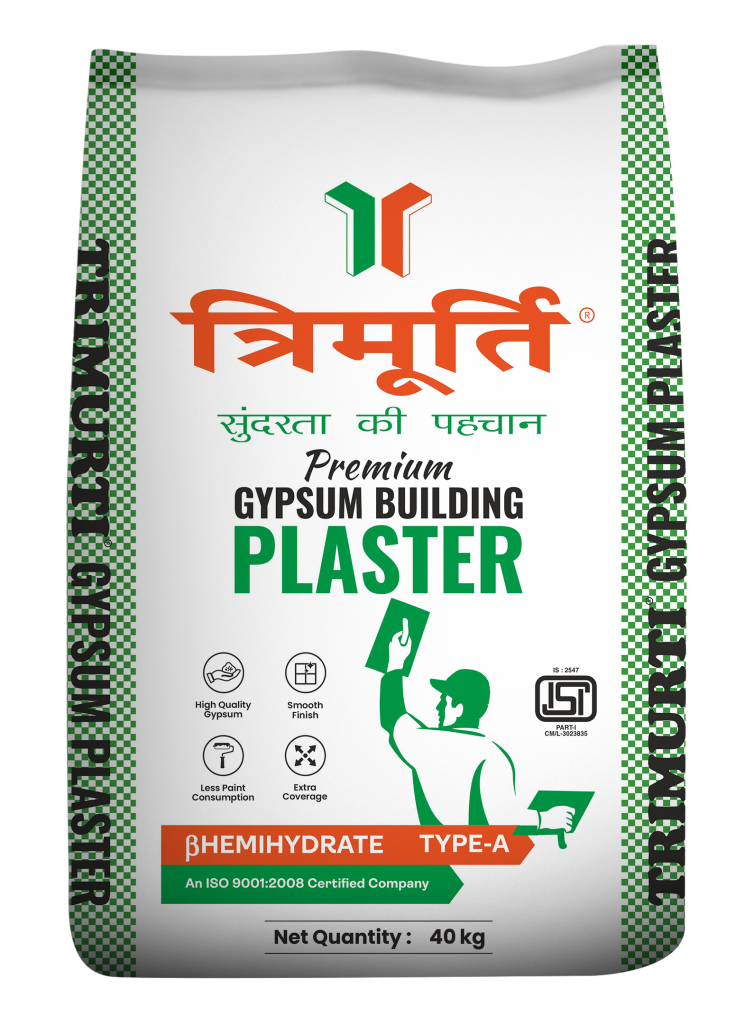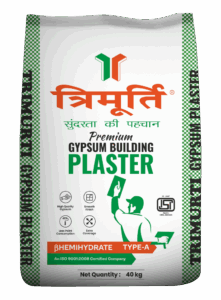
Gypsum plaster is a favorite in the world of construction and interior design thanks to its smooth finish, quick setting time, and eco-friendly nature. However, like many construction materials, it requires proper storage and handling to maintain its quality and extend its shelf life. If not stored correctly, gypsum plaster can absorb moisture from the air, form lumps, or lose its bonding strength, making it unusable and leading to unnecessary waste and extra costs.
Whether you’re a professional contractor or a DIY enthusiast, knowing how to store and handle gypsum plaster the right way can save you time, money, and frustration. From choosing the right storage environment to understanding packaging tips and usage timelines, this guide will help ensure your gypsum plaster remains fresh and ready to use whenever you need it. Here are 10 smart tips to get the most out of every bag of gypsum plaster.
Store in a Cool, Dry Place
Gypsum plaster is highly susceptible to moisture. Even small amounts of humidity can cause it to harden prematurely or form lumps. Always store it in a cool, dry area—preferably indoors, on a raised surface, and away from walls. Avoid places prone to dampness like basements, open sheds, or areas near leaking pipes.
Keep Bags Off the Floor
Always place gypsum plaster bags on wooden pallets or plastic sheets to prevent contact with the ground. Cement or tiled floors can transfer ground moisture to the bags, especially in humid or rainy weather. Raising the bags also improves air circulation around them, reducing the chances of moisture buildup.
Stack Bags Properly
Stacking gypsum plaster bags correctly is essential for maintaining their quality and preventing accidents. When too many bags are piled on top of each other, the weight from the upper layers can crush the lower ones. This pressure may cause the bags at the bottom to burst, warp, or lose shape, leading to plaster spillage, wastage, and potential contamination from dirt or moisture. Damaged bags are also harder to handle and can slow down your work.
A well-organized stacking method ensures easier access and better air circulation around the bags. It’s recommended to stack no more than 15 to 20 bags in a single pile. Keeping the stacks lower and stable reduces the risk of the pile tipping over, especially in storage areas where people are constantly moving around. You should also keep the stacks slightly away from walls to prevent dampness from seeping in and affecting the plaster.
Using wooden pallets or plastic sheets beneath the stacks adds an extra layer of protection against moisture from the ground. Ultimately, careful stacking isn’t just about saving space—it’s a smart safety and quality measure that helps extend the shelf life of your gypsum plaster while making your storage area more efficient and hazard-free.
Use Bags on a First-In, First-Out Basis
Use the oldest stock first to reduce the chances of expired or clumped plaster. Check the manufacturing and expiry dates on each bag before use. This is especially important on larger sites where many bags are bought in bulk.
Seal Open Bags Tightly
When working with gypsum powder, it’s common not to use an entire bag in one go. However, proper storage of the leftover material is essential to maintain its quality. Gypsum plaster is highly sensitive to moisture and air, which can cause it to clump, harden, or lose its effectiveness over time. If you leave the bag open or loosely sealed, the powder can absorb humidity from the environment and become unusable.
To avoid waste, start by tightly folding down the top of the bag after use. Use a heavy-duty clip, duct tape, or plastic wrap to seal it securely. This simple step keeps the air out and reduces exposure to ambient moisture. For added protection, place the sealed bag inside an airtight plastic bin or a strong storage container with a lid. Make sure the container is dry and stored off the ground in a cool, well-ventilated space away from direct sunlight.
Avoid Contaminating the Plaster
Keep tools, hands, and containers clean when handling gypsum plaster. Introducing even small amounts of water, dust, or foreign particles can affect the mix quality. If you transfer plaster to another container, ensure it’s dry and clean to avoid chemical reactions that reduce effectiveness.
Don’t Store Near Chemicals or Paints
Gypsum plaster can absorb odors and contaminants from nearby chemicals or paints. Store it separately, in a designated clean zone away from volatile materials. Cross-contamination might not only alter the plaster’s performance but also affect indoor air quality once it’s applied.
Be Mindful of Shelf Life
Most gypsum plasters come with a shelf life of 3 to 6 months from the manufacturing date. Keeping it beyond that period, even in ideal conditions, increases the risk of setting failure or weak bonds. Check dates regularly and dispose of expired bags responsibly.
Monitor Weather Conditions
If you’re storing gypsum plaster in areas without climate control, be extra cautious during monsoon or high-humidity seasons. Use dehumidifiers or moisture-absorbing agents like silica gel in storage rooms. You can also cover the entire stack with a large waterproof tarpaulin to shield against sudden leaks or humidity.
Transport With Care
Handling gypsum plaster or tile adhesives carefully during transportation is as important as storage. Avoid exposing the material to rain or placing it in open trucks without a protective covering. Ensure the packaging remains intact to prevent tearing and spillage. Once delivered, inspect the bags for damage or moisture before storing them.
Proper storage and handling of gypsum plaster might seem like small steps, but they make a big difference in product quality, work efficiency, and cost savings. Moisture is the biggest enemy of gypsum plaster, and even short-term exposure can compromise its usability. By following these 10 practical tips, you can ensure that your plaster stays in perfect condition until you’re ready to use it.
Whether you’re working on home renovations, commercial interiors, or any large-scale construction, these habits will help you get the most value from every bag. So the next time you stock up on gypsum plaster, remember: a little care in how you store and handle it today means better performance and fewer headaches tomorrow.





